Here are the Top 15 things You Should Keep Up With on Your Vehicle
Cars need maintenance no matter how much you drive them. Adequate care equals adequate safety. Feel free to bookmark this page as a reference, making note of all dates and mileages where applicable.
To Start… Drive safely and Protect the Look of Your Car
Safety Inspection
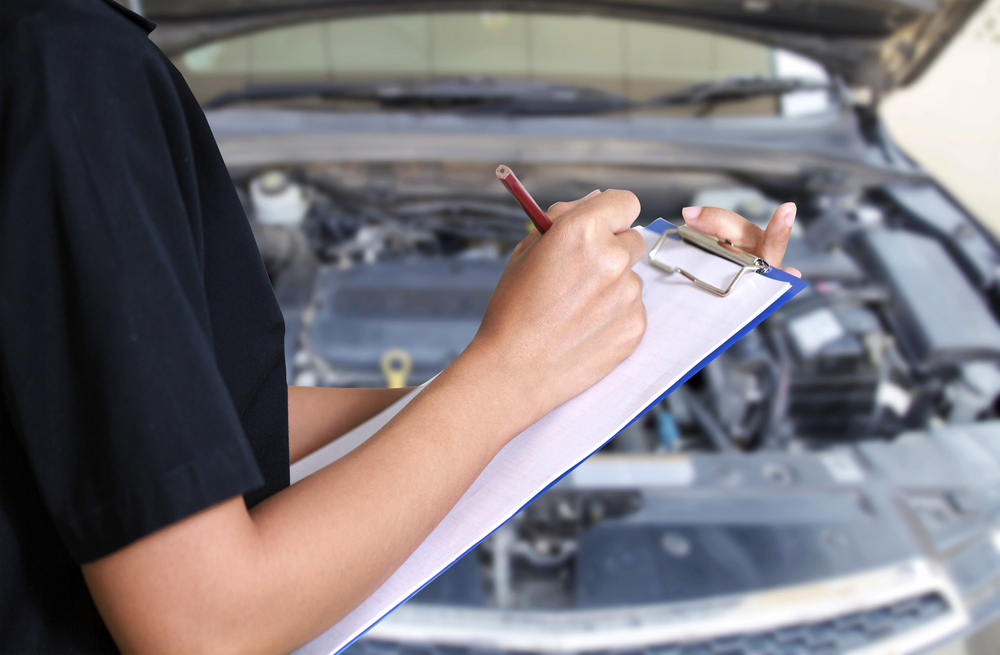
A car safety and emissions inspection is a government inspection, regulated by each state individually, that ensures cars are safe to drive. There are two essential parts to this state government–regulated inspection. The first is the safety inspection that checks to make sure the car is functioning properly. The second is the car emissions inspection that works to ensure the car isn’t emitting more pollution than is legally allowed. As such, several areas of a car are checked thoroughly for wear and tear and performance.
Inspections are required every year and a colored sticker is given with a number corresponding to the month the inspection sticker is set to expire. Failure in getting a re-inspection done (even after failing an initial inspection outright) will result in a fine if stopped by police while on the road.
Exterior / Interior Cleaning
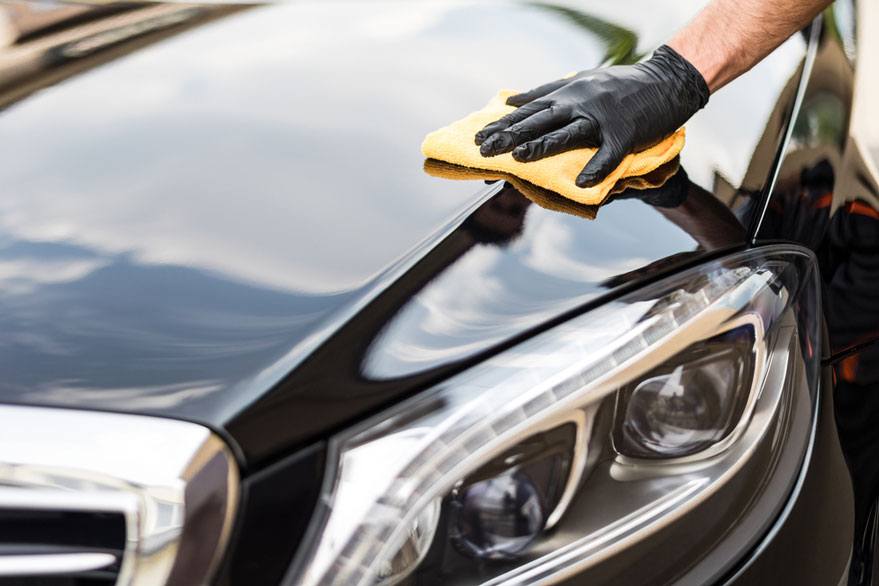
Washing your car is extremely important. It prevents contaminants like dust, dirt, pollen, tree sap, bug guts, salt, air-borne pollutants from adhering to your vehicle. Your car is also metal, although a lot of plastics are being used these days in such places as bumpers, the linings of the wheel wells and some trim parts. Metal is known to rust. The paint protects the car from the elements, forestalling the process of rusting. The paint is in turn protected by a clear coat, which is what gives the shiny-looking finish to the paint.
Many auto detailing and car experts recommend washing your car once a week to successfully prevent contaminants from damaging your paint and finish. Vacuuming should also be done monthly while detailing every 4 to 6 months to keep your car’s fresh appearance longer-lasting.
Windshield Wiper (Replacement) & Washer Fluid (Level)
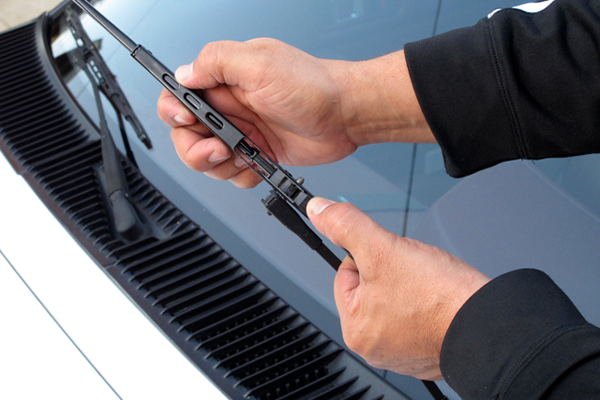
Replace wipers when blades no longer make contact with windshield surface; condition assessed upon vehicle inspection. Refill washer fluid upon own inspection or if washer fluid dashboard light turns on. Average shelf life of blades: 6 months. Average shelf life of fluid: 6 to 12 months if opened (up to several years if unopened).
Windshield wipers are devices used to remove moisture and unwanted material fragments from the windshield of a vehicle. A wiper is typically comprised of an arm that pivots at one end with a rubber blade attached to the other. The arm moves back and forth over the windshield to squeegee water and debris from the surface. The speed of most windshield wipers can be adjusted to continuous and intermittent settings. Many vehicles are equipped with two windshield wiper blades that are synchronized.
Replace burnt-out light(s) as soon as possible; conditions assessed upon vehicle inspection. Average shelf life: 500 to 1,000 hours.
Your vehicle’s headlights are designed to provide you the ability to travel safely at high rates of speed at nighttime or darkened conditions. Some vehicles headlights automatically turn on when the sensors are triggered by the oncoming of nightfall. Proper operating headlights save you from potential trouble on the road. The typical headlight is designed to provide two kinds of beams: a low beam and a high beam.
The low beam is designed to provide ample road illumination while minimizing the glare of your headlights to oncoming vehicles. The high beam provides maximum illumination with limited glare control. Without proper operating headlights, your ability to navigate the road in low-visibility conditions is significantly impaired. Simply put, your vehicle’s headlights make it safe to drive at night or in low-visibility conditions.
The taillight (assembly) consists of the tail lamps attached in front and at the rear part of the vehicle, reverse lights for backing up, and the signal lights for turning (these also function as hazard lights used during times of emergency on the road).
Headlight & Taillight (Replacement)

Muffler (Replacement)
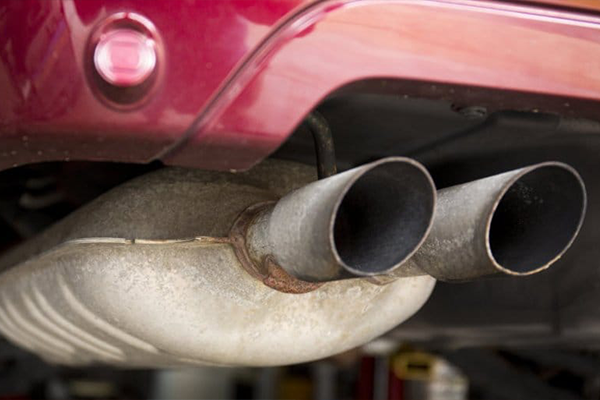
Replace every 2 years or 24,000 miles (minimum average shelf life).
Our exhaust system, and namely the muffler, are crucial to your vehicle’s performance. Most people know that the muffler “muffles” or reduces the sound of the engine. It’s designed to act as a sound proofing device. It directs the engine’s sound waves through sets of internal tubes and chambers. These tubes and chambers are designed to partially cancel out the sound waves, giving you a nice, quiet engine.
Another key function of the exhaust is to steer the exhaust fumes out of the engine and away from the passengers in the car. If there is a crack or hole in the muffler, the fumes can easily make their way inside the car. Exhaust fumes contain chemicals such as carbon monoxide, and other high hazardous toxins. These can cause serious harm to you and your passengers.
Fill up every 30,000 to 60,000 miles (average shelf life).
If you’ve ever driven a classic car (or know what one was actually like), the first thing you’d probably notice is the super heavy steering. Can you imagine trying to parallel park? Modern cars have upgraded to power steering to make maneuvering easy at any speed, and many power steering systems are hydraulic, using pressurized fluid – or power-steering fluid – to make turning the wheel effortless (though some newer models now rely on electric steering).
Power-Steering Fluid (Level)
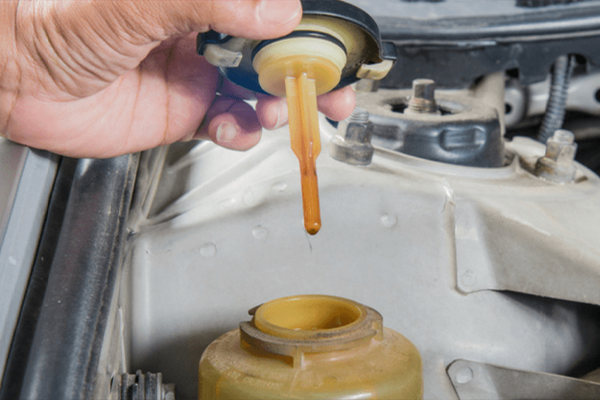
Battery (Replacement)
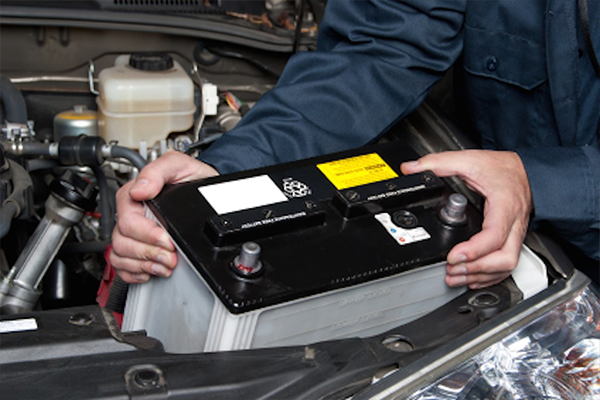
Replace every 2 to 6 years or as needed (average shelf life; depends on amount of driving).
The car battery provides a jolt of electricity necessary to power all the electrical components in your vehicle. Without battery power, your car won’t start. A chemical reaction puts your car in action: Your battery converts chemical energy into the electrical energy necessary to power your car, delivering voltage to the starter. Furthermore, not only does your battery provide the energy required to start your car, it also stabilizes the voltage (that’s the term for the energy supply) in order to keep your engine running. So it’s important to keep that electric current steady.
Replace every 12 months or 12,000 to 15,000 miles or as needed (average shelf life).
All auto filters are designed to prevent harmful debris from entering any parts where air and fluid flows, including your engine, radiator, fuel lines and more. Once a filter is no longer performing its intended function, decreased performance—even engine damage—can result.
Air filters prevent harmful debris, dirt and contaminants from entering your engine. Cabin filters (an implementation that began appearing in vehicles in 2002), prevents dust, pollen, dirt and other pollutants from entering your car through your A/C and heat vents. Finally, fuel filters keep dirt, debris and contaminants from clogging your fuel lines and causing erratic, unstable fuel performance and reduced fuel economy.
Air / Cabin / Fuel Filter (Replacement)
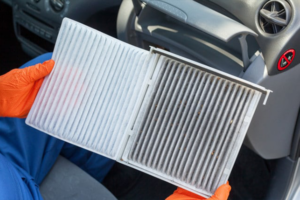
Automatic Transmission Fluid (Level) & Filter (Replacement)
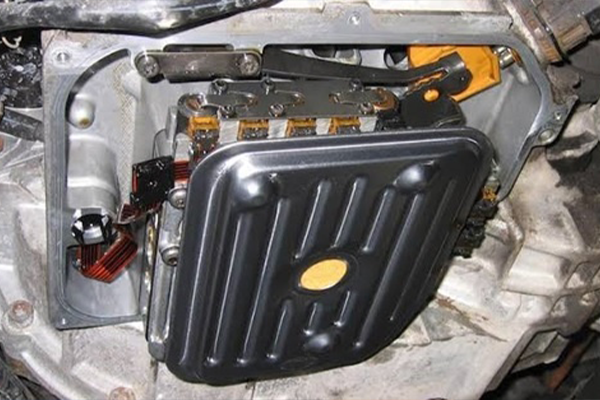
Fill up every 30,000 to 60,000 miles and replace every 2 years or 24,000 miles (minimum average shelf life) respectively.
The transmission plays a hugely important role in how your vehicle functions. It’s connected to the rear portion of your engine and transfers power from the engine to the wheels. Without a transmission, a vehicle simply cannot move. The transmission filter is a vital part of that system and is situated above the transmission pan, which catches any excess fluid, and below a pickup tube that connects to the oil pump, which regulates the pressure of fluid in the transmission. The transmission filter functions as a sieve to collect contaminants like dirt and debris before sending lubricating fluid to the transmission itself.
Transmission fluid serves a similar purpose as oil in the engine: it lubricates and cools the components inside your transmission. Transmissions contain gears, clutches (even in automatics), and valves which must move smoothly to provide seamless shifts. While many transmissions come with “lifetime” fluid that should never need replacement, bad transmission fluid can cause rough shifting, strange noises, and uncontrolled surging that make driving difficult.
Replace every 30,000 (minimum) to 100,000 miles (maximum).
Spark plugs are what supplies the spark that ignites the air/fuel mixture, creating an explosion which makes an engine produce power. These small but simple plugs create an arc of electricity across two leads which are not touching, but close enough together that electricity can jump the gap between them. This alongside the timing belt makes up a car’s ignition system.
Spark Plugs (Replacement)
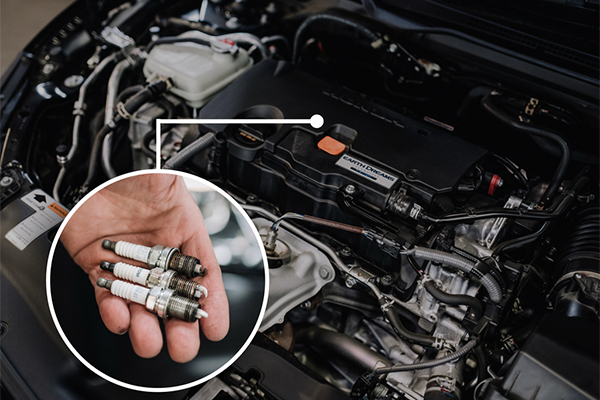
Drive or Timing Belt (Replacement)
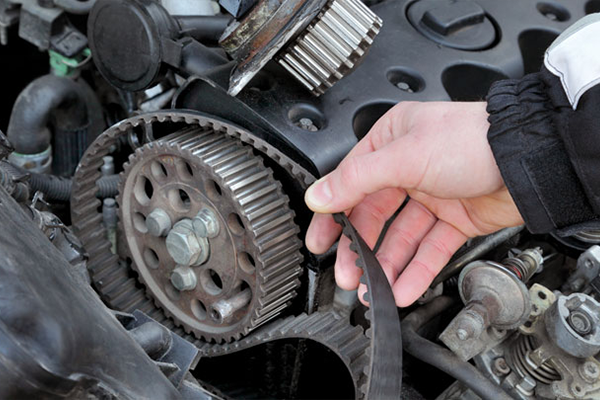
Replace every 60,000 to 100,00 miles or 4 to 6 years and every 36,000 miles or 3 years respectively (average shelf life).
The drive belt, serpentine belt or v-belt is a rubber belt that connects the alternator, power steering, and AC to the part of the engine (crankshaft) which transfers the power from the engine to those components. It transports power to your vital automotive components. It’s a long, snaking, winding belt that keeps your alternator, power steering pump, air conditioning and, in some cases, your water pump running smoothly and effectively. Without this belt, the battery will not get charged and none of the electrical accessory components in the car will work.
In more recently manufactured vehicles, the timing belt is a rubber belt that synchronizes the actions of the camshaft and crankshaft to keep your valves safely moving and your engine running. In older vehicles, the timing belt may actually be a chain. Either way, the camshaft operates the valves in your engine to let in and out air and gas. The crankshaft moves the pistons up and down. These two systems have to operate in exact synchronization or damage could occur to the valves, pistons, engine or other nearby parts. It’s the job of the timing belt to ensure that this synchronization occurs by keeping each system turning at the correct rate.
Every 60,000 to 90,000 miles respectively (an oil change should be done / engine fluid should last without refilling).
Engine fluid – also known as engine oil – after fuel (unless you have a fancy EV) is your car’s most important fluid. Engines components spin thousands of times a minute, and it’s oil that keeps everything moving smoothly. So when do you need to change it? Check your owner’s manual – it should be your car maintenance and operation bible. Many cars, pickups, and SUVs now have service reminder monitors that alert drivers when to change their oil. These systems typically monitor the number of miles a vehicle has traveled, and they also sense how hard the car is being driven, and adjust accordingly. Stickers can be also given with the next milestone to be reached in terms of mileage or date for a new oil change when you bring your car in to do an oil change.
Engine Fluid (Level) / Oil Change

Coolant / Anti-Freeze (Level)

Fill up every 2 years or 24,000 miles (minimum average shelf life).
Engine coolant is a liquid mixture of water and antifreeze located in your vehicle’s radiator. It prevents your engine from overheating in hot weather and freezing in extreme cold weather, conditions where things can go very wrong for an engine. Coolant assists with the transfer of heat and prevents engine damage caused by freezing or boiling. Heat can only be effectively transferred with a liquid in the system, so it’s crucial to keep that liquid from freezing or evaporating.
Replace tires every 6 (minimum) to 10 years (maximum) or when treads severely wear out, whichever comes first. Check for air pressure on all tires at least once a month.
Importance to Your Vehicle: The main functions of a vehicle’s tires include supporting the vehicle load, transmitting traction and braking forces to the road surface, absorbing road shocks, and changing and maintaining the direction of travel. Tires with adequate air provides cushioning for a comfortable ride. An over-inflated tire rides much harder than one that is properly inflated, while under-inflated tires can cause the sensation of floating.
Tire (Replacement) & Air (Pressure)
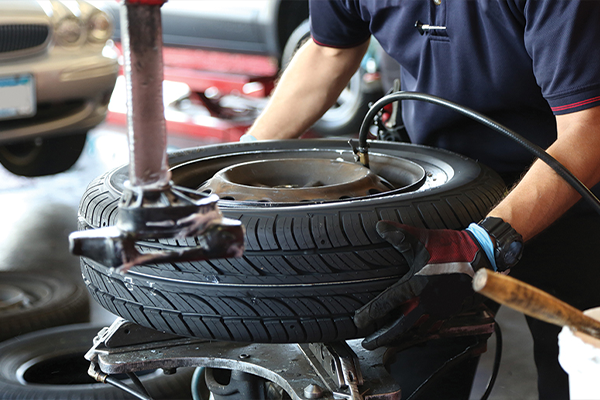
Brake Pad (Replacement) & Fluid (Level)
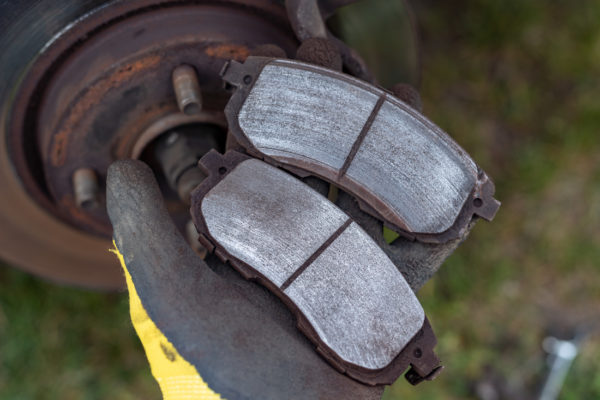
Replace every 2 years or 24,000 miles (minimum average shelf life) or when brakes have worn out. Brake fluid should be checked during an oil change and replaced every 4 to 5 years.
While most assume that brakes are responsible for stopping your car, the answer is a bit more complex. The friction of your tires against the road is what slows down and stops your car. The brakes are what’s responsible for stopping the wheels from spinning. It’s the job of the brake pads and brake discs to create the resistance needed to cause this action and each time your vehicle brakes the discs begin to wear. Regarding brake fluid, since modern car brakes are hydraulic, the fluid connects the brake pedal to the brakes themselves. As such, when you step on the pedal, a plunger pressurizes the brake fluid inside the lines, which causes the brake pads to clamp on the rotors and slow your car. It’s supposed to happen instantly – if there’s any delay or abnormal feeling to your brake pedal, the fluid is the first thing to check.